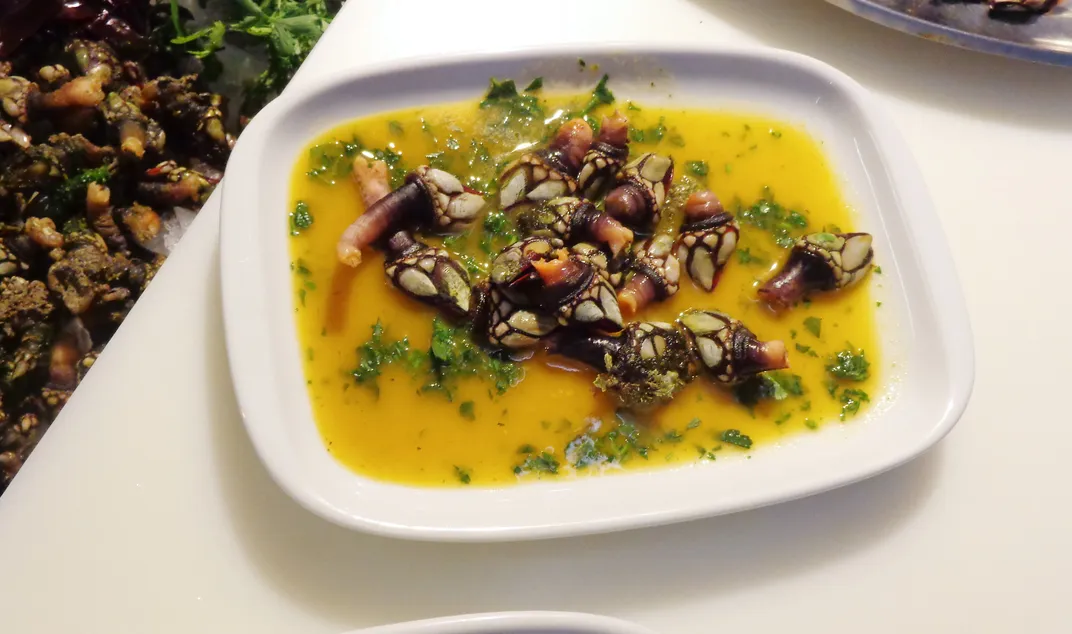At a dimly lit hole-in-the-wall restaurant in Lisbon, I’m elated to find gooseneck barnacles on the menu. Enjoyed in this region of the world, percebes are generally under two inches long, with a fleshy body and pieces of shell that lead to a point on one end. Boiled and tossed in butter, they’re sweet, with a satisfying chew, similar to a razor clam.
Tender and delicious, gooseneck barnacles are expensive. Rui Franco, a professional shellfish gatherer based in Ericeira, a fishing town and premier surfing destination on the western coast of Portugal, explains that prices can vary greatly depending on quality, size and season. Generally, he sells barnacles for about 10 euros per kilogram, about $5 a pound. “However, in a good seafood restaurant in Madrid or Barcelona, it can go for up to 500 euros per kilogram,” he says. At this particular establishment, I ended up paying around 55 euros ($60) for an order big enough to share.
It’s really no wonder when you hear how the delicacy is harvested.
Boiled and tossed in butter, they’re sweet, with a satisfying chew.
CM Mafra
“Barnacles live and grow in the intertidal zone, between high tide and low tide, in the area where there is the most swell,” Franco explains. “The higher the tide, the more oxygen there is, and they tend to settle.” Shellfish gatherers, in a risky endeavor, have to extract them from the rocks. “They breed in the areas with the biggest waves, in the part of the sea that has that white, crashing foam,” he adds.
Gooseneck barnacles earned their English name for two reasons. First, they have a long, muscular stalk that arguably resembles a goose’s long neck. And secondly, hundreds of years ago, people, having not seen how geese nest, oddly surmised that the birds grew from these barnacles. “A legend dating back to the 12th century has it that a pair of unusual geese showed up in Scotland that no one had seen before. Not having seen this type of goose emerge from any known eggs, locals deduced they must have hatched from the gooseneck-like barnacles that washed up on the shore,” writes Carrie Stevenson, a coastal sustainability agent for the University of Florida’s Institute of Food and Agricultural Sciences, in a blog post.
Franco has been a shellfish gatherer since the 1990s. He holds one of the first gathering license numbers. “My ANI number, the national number for shellfish…
Click Here to Read the Full Original Article at Travel | smithsonianmag.com…
